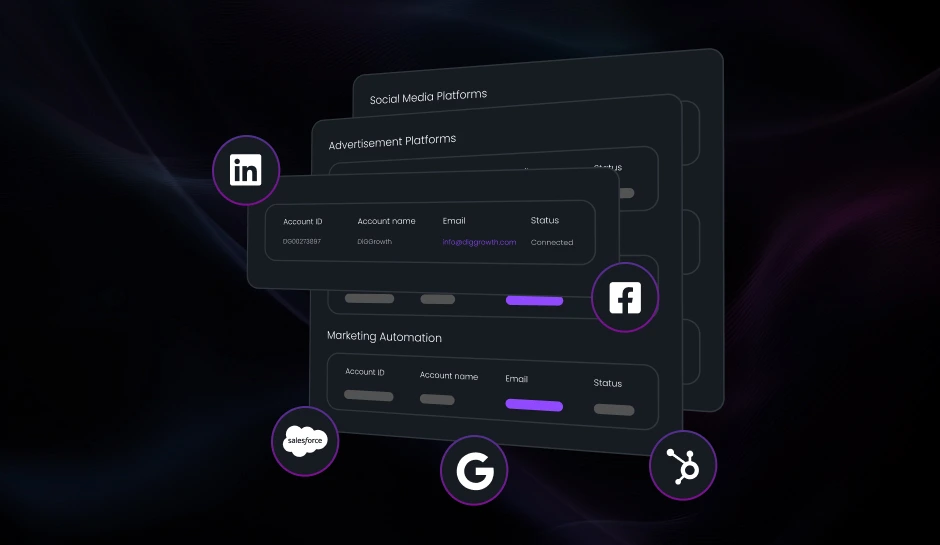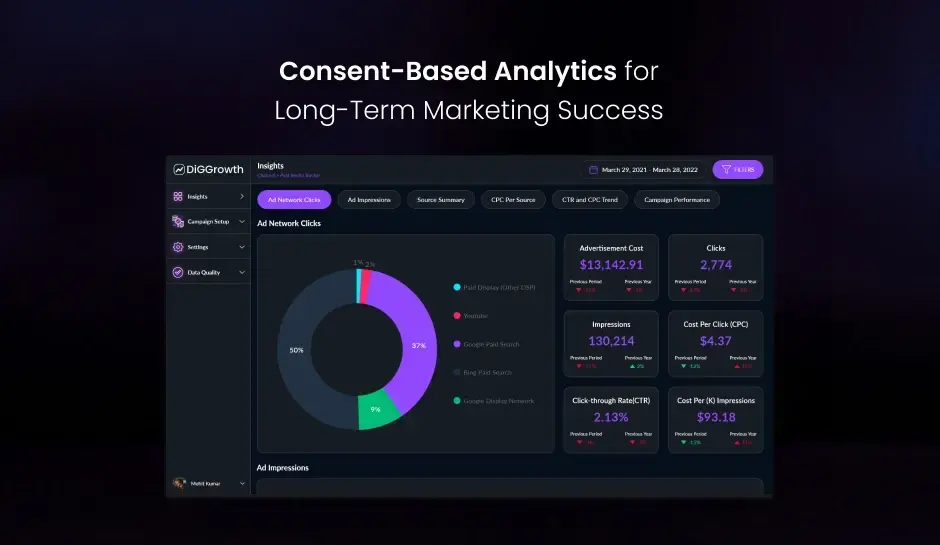
Master Your Analytics: Unveiling Looker Studio’s Robust Data Integration Capabilities
Unlock the power of Looker Studio to transform your data into compelling narratives. Explore diverse data sources, master caching, refresh strategies, and enhance collaboration through robust access controls. Start integrating your data today to drive informed decision-making and reveal actionable insights that shape your organization’s future.
Formerly known as Google Data Studio, Looker Studio has emerged as a rebranded and enhanced platform, harnessing the capability to turn data into informative, easy-to-understand reports and dashboards. With Looker Studio, professionals dive into a world where data reporting becomes more than numbers and charts; it’s a storytelling tool that delivers actionable insights and drives informed decision-making.
As users navigate through Looker Studio’s environment, the concept of Data Sources stands out as a foundational element. These Data Sources act as pipelines, channeling information from various databases and applications into Looker Studio, enabling a seamless blend of data from different origins to create a coherent narrative.
Diverse Data Sources in Looker Studio
Looker Studio offers many data source options to enhance the analytics experience. Users can connect to various data types, from simple spreadsheets to complex relational databases.
Overview of the Different Data Sources Available
Users can access data stored in cloud services, marketing platforms, and databases. Each data source in Looker Studio holds specific attributes and structures that suit distinctive analytical needs. For example, one can access data from Google Analytics for web analytics, Google Ads for advertising data, or Google Sheets for straightforward spreadsheet analysis.
Discussing Native and Community Connectors
Native connectors are built into Looker Studio and allow direct connections to Google-owned services like Google Ads, Analytics, and Google BigQuery. Beyond these, an array of community connectors expands the inventory to integrate with non-Google services such as Facebook, Twitter, and Salesforce. These community-created options are critical for leveraging data from various sources.
How to Choose the Right Type of Data Source Based on Your Data Needs
Selecting the appropriate data source necessitates a thorough understanding of the data complexity and reporting requirements. A Google Sheets connector might suffice for smaller, less complex datasets. On the other hand, integrating SQL databases benefits those demanding granular control over large, relational datasets. The decision hinges on the scale of data, the need for real-time insights, and the intricacy of the data relationships.
- Cloud-based services harness data stored in online platforms, which are convenient for accessible, collaborative analysis.
- Marketing platforms enable advertisers and marketers to analyze campaign performance across multiple channels.
- SQL databases cater to those needing advanced query capabilities for custom insights.
Compatibility between the data source and Looker Studio dictates feasibility and performance. The depth of integrated analysis grows as users adeptly match their data requirements with the capabilities of the chosen data source.
Mastering Cache Behavior and Refresh Rates in Looker Studio
Users of Looker Studio manipulate data sources, requiring an understanding of how caching balances workload and speed. Acknowledging the balance between performance and data freshness equips users to optimize their reporting. The nuances of caching behavior and refresh rates in Looker Studio stand central to this objective. Users calibrate the timeliness of their data reports by setting deliberate refresh rates.
Deciphering Cache Behavior in Looker Studio
Looker Studio uses caching to expedite the data retrieval process. When a report is generated, Looker Studio temporarily stores the data. Subsequent requests for the same data can use this cache, reducing the load on the data source and the time it takes to refresh the report. Unlike some systems, where cache behavior is opaque, Looker Studio provides visibility and control to its users.
Visualizing data thus transforms into a more efficient process; users need not wait for the system to pull data repeatedly from the original databases, especially for large datasets. The cache typically persists for 12 hours; however, this period may vary based on the data source type and the settings chosen by the user.
Setting and Managing Data Refresh Rates
Controlling the frequency of data updates ensures reports reflect current information. In Looker Studio, the refresh rate can be configured to suit a project’s needs best. Users navigate to the data source settings to define this parameter. Options range from ‘on demand’ to scheduled intervals, like hourly or daily refreshes, which Looker Studio will execute automatically.
Selecting a refresh rate is not merely a technical task but a strategic decision. Faster updates keep data current but can increase loading times and may strain the data source. Users handling time-sensitive information benefit from shorter intervals, while those dealing with stable datasets might opt for less frequent refreshes.
Balancing Performance with Data Freshness
The choice of a refresh rate directly affects maintaining the equilibrium between performance and up-to-date data. Frequent refreshes guarantee that the latest data is always available, yet they may hamper report performance. Conversely, longer gaps between refreshes help maintain a swift report delivery experience, even though the data might not reflect the latest changes.
To achieve an optimal balance, Looker Studio allows users to tailor the refresh strategy, recognizing that each dataset and reporting need is unique. Careful consideration leads to a tailored approach, ensuring that report performance and data accuracy are not mutually exclusive but rather function in harmony to support informed decision-making.
- Efficient reporting hinges on a fair balance between performance and data freshness.
- Setting precise data refresh rates aligns your reports with business requirements.
- Looker Studio empowers users to define the caching and refresh behavior that suits their data’s nature and organizational needs.
Pro Tip- Regularly assess your data refresh rates based on the nature of your datasets. For time-sensitive reports, opt for shorter refresh intervals to ensure accuracy, while stable datasets can benefit from longer refresh periods to enhance performance. Balance is key for efficient reporting in Looker Studio!
Data Blending in Looker Studio
Data blending merges data from multiple sources into a comprehensive dataset for reporting and analysis. This capability expands Looker Studio’s potential by allowing users to create meaningful insights from diverse datasets that otherwise would remain siloed.
How Data Blending Transforms Reporting
Merging sales figures from an e-commerce platform with marketing data from a campaign analytics tool can reveal the direct impact of specific marketing strategies on sales. By blending these datasets, you discern which campaigns drive revenue, adjusting marketing spend more effectively for future endeavors.
Exploring Data Blending through an Example
Consider a scenario where demographic information from a CRM system is combined with user behavior data from Google Analytics. The resulting dataset could demonstrate correlations between customer age groups and website engagement patterns, thus guiding targeted content strategies.
Overcoming Data Representation Challenges
Data blending can address and solve challenges associated with representing complex data relationships. For instance, financial analysts might blend historical stock prices with news sentiment analysis to forecast market fluctuations informed by public opinion trends and past performance.
- Analysts can pinpoint intersections between public sentiment and market movements.
- Strategies can be tailored to capitalize on these insights for trading decisions.
Mastering Access Control and Sharing in Looker Studio
Collaboration drives modern data analysis, with Looker Studio at the forefront for teams seeking to maintain data integrity while sharing insights. Understanding how to set up access controls and permissions is not only about enabling teamwork; it ensures that sensitive information remains secure as it circulates amongst stakeholders.
Setting Up Access Controls and Permissions
Within Looker Studio, access to data sources can be meticulously configured. Users can assign roles such as Viewer, Editor, or Owner, each carrying distinct capabilities. An Editor may modify reports and control the data source, whereas a Viewer can only see the report without any modification rights.
The assignment of roles serves as a streamlined process to administer data access. By assigning roles, organizations can control who has the capability to edit data source configurations, ensuring that the integrity of the data remains unaffected by unauthorized modifications.
Sharing Data Sources Securely
Sharing a data source does not inherently compromise its security. Looker Studio’s sharing features allow users to distribute access securely through invitation, with required Google account authentication for all parties. As a result, data sources can be shared across teams and departments without relinquishing control over who views or edits the data.
- Data sources are shareable by link or email invitation, and users are prompted to accept and authenticate before gaining access.
- Permissions can be tailored for each user, harmonizing data accessibility with security protocols.
- Control over sharing settings can be adjusted anytime, granting users the flexibility to respond to changing team dynamics or security requirements.
Data is an asset that gains value when shared with the right collaborators. Looker Studio equips you with the tools to unlock its potential securely and responsibly. As data landscapes evolve, so must the practices for managing access, ensuring that Looker Studio remains a keystone for collaborative and secure data analysis.
Pro Tip- Establish clear access roles in Looker Studio—Viewer, Editor, or Owner—to ensure proper data management and security. Regularly review and adjust permissions as team dynamics change to maintain data integrity while fostering effective collaboration.
Troubleshooting Data Source Connections in Looker Studio
When working with Looker Studio, data source connection challenges can arise, prompting the need for systematic troubleshooting strategies. Understanding the nuances of each issue enables swift and effective resolutions, ensuring an uninterrupted flow of data visualization.
Common Issues and Solutions
Connection attempts to data sources sometimes fail for various reasons. One prevalent issue involves authentication errors, which can be resolved by reviewing permission settings and ensuring that the correct access rights are granted.
If the data source requires API access, verify that the API is enabled and that Looker Studio has been granted the necessary permissions through the cloud platform’s console.
Another recurring issue is data fetching errors. These typically indicate that Looker Studio cannot retrieve data from the connected source. The remedy lies in checking the data query’s configuration for errors or limitations and ensuring it aligns with the source’s schema. Additionally, verify network and firewall settings that might block data transmission.
Diagnosis and Fixes for Connection Problems
Diagnosing connection problems begins with confirming that the data source is operational and accessible. Next, revisit the connection configurations in Looker Studio to affirm that all fields are completed accurately. Examining the error messages presented by Looker Studio can help identify the root cause, be it a faulty SQL query syntax for database connections or an exceeded quota for API requests.
For complex issues, such as those involving custom connectors or data source configurations that yield unexpected results, a thorough review of the documentation provided by the connector may unveil limitations or specific requirements overlooked during the initial setup.
Support and Documentation
Leveraging the official Looker Studio documentation can demystify cryptic error codes and offer step-by-step guides tailored to various data sources. For persistent or ambiguous problems, the Looker help forum and community may provide insights and solutions from other experienced users who might have encountered similar issues.
Contacting professional support services may be necessary for advanced or specialized cases where community support cannot provide a solution. This approach will connect you with experts who can offer deeper technical assistance to navigate and resolve the most challenging data connection obstacles.
By meticulously addressing the typical connection pitfalls and applying specific troubleshooting techniques, efficiency in managing Looker Studio data source connections can be significantly improved, leading to more reliable and powerful data analyses.
Pro Tip- When troubleshooting data source connections in Looker Studio, check for authentication errors and ensure all necessary permissions are granted. If issues persist, refer to the Looker documentation and community forums for specific solutions. For complex problems, consider reaching out to professional support for expert guidance.
Best Practices for Data Source Management in Looker Studio
Effective data source management in Looker Studio ensures that reports and dashboards reflect up-to-date and accurate information. Regular audits of data sources underpin their integrity and support decision-making processes based on current data trends. Strategies for maintaining data source health and report credibility involve monitoring and revising data connections to guarantee optimal performance.
Regular Audits of Data Sources
Conducting periodic evaluations of data sources detects potential issues such as broken links, outdated schemas, or discrepancies in data. These audits also verify that data sources are secure and their configurations align with the latest practices. Users can methodically review connections to tap into the most reliable and relevant data for their analyses.
Updates to Data Sources and Connections
Updating data sources and their connections ensures interoperability with the dynamic nature of Looker Studio. Enhancements to underlying datasets, API changes, or modifications in authentication methods necessitate prompt updates to maintain seamless data flow. Responsive adaptations to these shifts prevent the emergence of data gaps and preserve the integrity of reporting mechanisms.
Maintaining Data Source Health
Diligent data source management encompasses routine cleaning and validation exercises. These preventative measures include eliminating unnecessary fields, checking for data accuracy, and reinforcing consistent naming conventions. Users are encouraged to leverage Looker Studio’s built-in features to cleanse data and craft reports from dependable data sources.
Ensuring Report Integrity
Maintaining the credibility of reports from Looker Studio revolves around the conscientious use of data sources. Users need to ensure the appropriate application of filters, correct aggregation of data, and rigorous testing of report elements. Through these practices, stakeholders and decision-makers obtain trustworthy and actionable reports.
In conclusion, the successful management of data sources in Looker Studio revolves around regular audits, timely updates, scrupulous cleaning, data validation, and strict adherence to best practices in maintaining report integrity.
Master Your Data Narrative with Looker Studio
Dive deeper into the wealth of insights your business metrics can offer by harnessing the power of Looker Studio with its diverse data sources. Integrate platforms like Google BigQuery, Google Sheets, and SQL databases to unlock the stories hidden within your numbers. These connections enhance the richness of your reports and streamline your data workflows, providing a seamless backdrop for strategic decision-making.
Challenges in data analysis often stem from isolated data points. By connecting multiple data sources in Looker Studio, you knit together various strands of your business operations, revealing a cohesive tableau of performance and opportunity.
Whether your focus is on real-time data from streaming sources or historical trends uncovered through blended data sets, Looker Studio stands ready to transform raw data into informative, actionable charts and reports.
As you embark on this journey, your expertise will grow with each connected data source, and so will the value of your reports. Lift the curtain on business performance with comprehensive data narratives that can shape your organization’s future. Start integrating your data sources with Looker Studio today and embrace its dynamic capabilities. Share your experiences, challenges, and triumphs with the community to foster a collaborative environment of continuous improvement and innovation.
Key Takeaways
- Looker Studio allows seamless connections to various data sources, including Google services, marketing platforms, and SQL databases, enabling users to create cohesive and insightful reports.
- Users can customize data sources and reports through built-in features, community connectors, and APIs, tailoring analytics to meet specific business needs and enhancing team collaboration.
- Understanding cache behavior and setting appropriate refresh rates are crucial for optimizing report performance while ensuring data freshness, allowing users to balance accuracy with responsiveness.
- Blending multiple datasets empowers users to uncover complex relationships and trends, transforming isolated data points into comprehensive narratives that inform strategic decision-making.
Need assistance navigating the looker studio landscape?
Just write to us at info@diggrowth.com and we’ll get back to you.
Ready to get started?
Increase your marketing ROI by 30% with custom dashboards & reports that present a clear picture of marketing effectiveness
Start Free Trial
Experience Premium Marketing Analytics At Budget-Friendly Pricing.

Learn how you can accurately measure return on marketing investment.
Additional Resources
Integrating Data from Different Channels for a Holistic View of Your Marketing Performance
Who's your ideal customer? Where do they come...
Read full post postGet Your Channels to Play Nice: Integrated Data for Smarter Marketing
If you’re a savvy marketer, you’re living in...
Read full post postConsent-Based Analytics: Ensure Long-Term Marketing Success
As marketers, we want our customers to perceive...
Read full post postFAQ's
Looker Studio supports connections to various data sources, including Google services (like Google Analytics and Google Ads), cloud databases, SQL databases, and community connectors for platforms like Salesforce and Facebook.
Data blending allows users to merge data from multiple sources into a unified dataset, enabling comprehensive analysis and insights by combining disparate data points, such as sales and marketing metrics.
Caching improves performance by temporarily storing retrieved data, reducing load times for subsequent requests, and allowing users to access reports more quickly without repeatedly querying the original data source.
Users can set roles (Viewer, Editor, Owner) to control permissions for data sources and reports, ensuring that sensitive information is secure while facilitating collaboration among team members.
To ensure the integrity and accuracy of your reports, regularly audit data sources, update connections as needed, maintain data cleanliness, and ensure proper filter and aggregation application.
 Richa Bhardwaj
Richa Bhardwaj  Sameer Pawar
Sameer Pawar 

